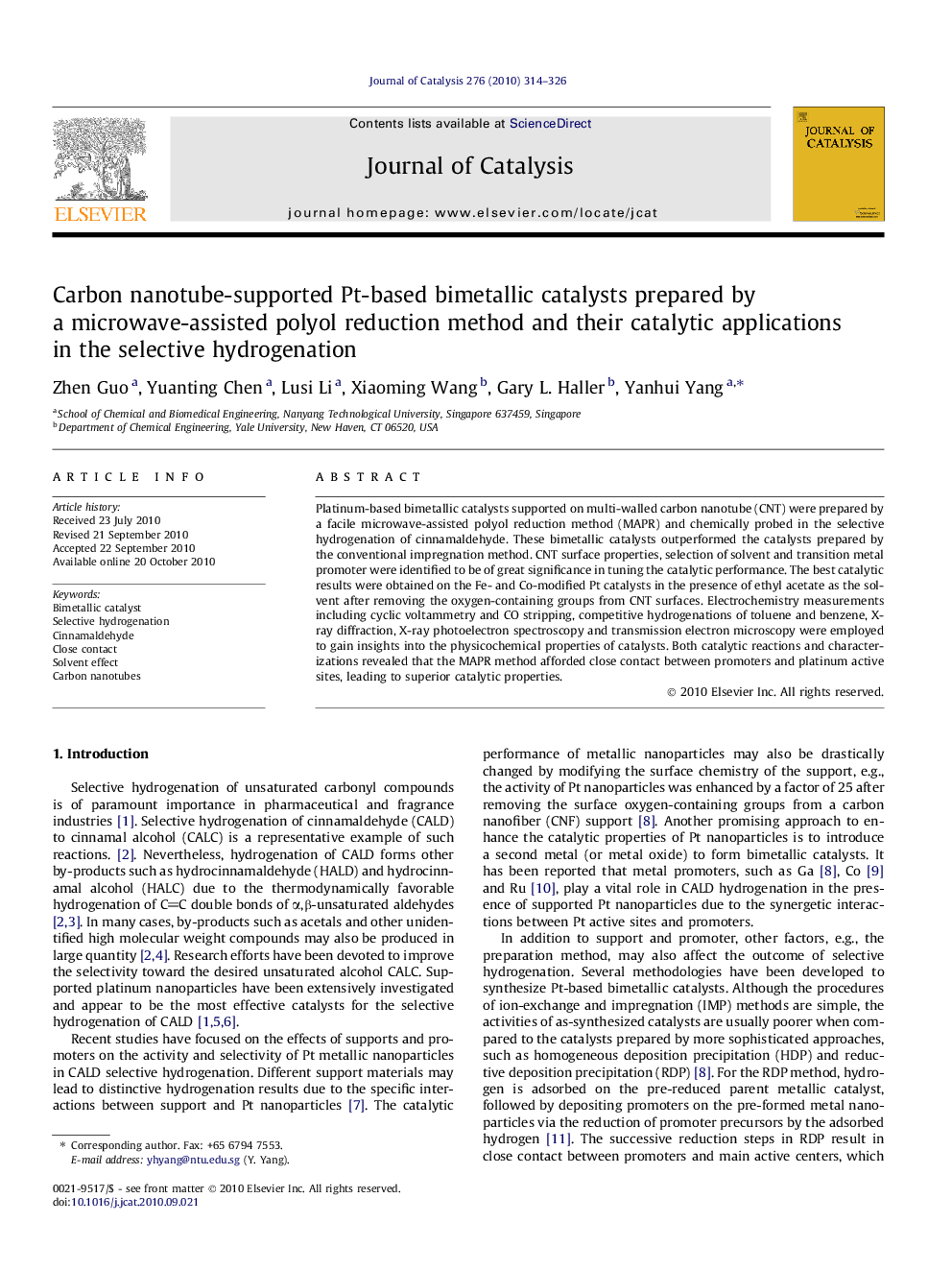| Article ID | Journal | Published Year | Pages | File Type |
|---|---|---|---|---|
| 61934 | Journal of Catalysis | 2010 | 13 Pages |
Platinum-based bimetallic catalysts supported on multi-walled carbon nanotube (CNT) were prepared by a facile microwave-assisted polyol reduction method (MAPR) and chemically probed in the selective hydrogenation of cinnamaldehyde. These bimetallic catalysts outperformed the catalysts prepared by the conventional impregnation method. CNT surface properties, selection of solvent and transition metal promoter were identified to be of great significance in tuning the catalytic performance. The best catalytic results were obtained on the Fe- and Co-modified Pt catalysts in the presence of ethyl acetate as the solvent after removing the oxygen-containing groups from CNT surfaces. Electrochemistry measurements including cyclic voltammetry and CO stripping, competitive hydrogenations of toluene and benzene, X-ray diffraction, X-ray photoelectron spectroscopy and transmission electron microscopy were employed to gain insights into the physicochemical properties of catalysts. Both catalytic reactions and characterizations revealed that the MAPR method afforded close contact between promoters and platinum active sites, leading to superior catalytic properties.
Graphical abstractCNT-supported Pt bimetallic catalysts synthesized by microwave-assisted polyol reduction method outperform the corresponding impregnated catalysts in cinnamaldehyde hydrogenation, which is attributed to the close contact between Pt and promoter.Figure optionsDownload full-size imageDownload high-quality image (80 K)Download as PowerPoint slide
